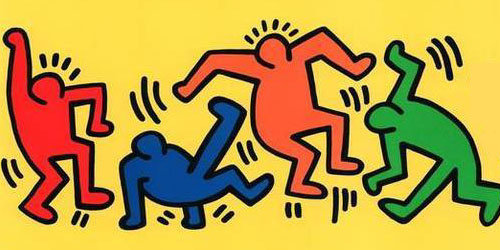Imagine Internships
Statistical shape grammars for 3D animation

Advisors
Rémi Ronfard, IMAGINE teamContact : remi.ronfard@inria.fr (04 76 61 53 03)
Marc Sigelle, Laboratoire Image, Sup Telecom Paris
Context
Procedural methods are a promising alternative to data-driven methods in computer graphics and animation, but they are difficult to use in practice because there is no clearly defined methodology for designing a grammar that fits the designer's aesthetics goals.
In a recent paper, Talton et al. have proposed Markov-chain Monte Carlo inference methods for bringing artistic control to grammar-based procedural models in Computer Graphics. Given a grammar and a high-level specification, the method computes a production from the grammar that conforms to the specification.
In this internship, we propose extensions of that approach for capturing the visual styles of paintings and applying them to 3D computer graphics and animation.
Objectives
The main objective of the project is to create 3D animations "in the style" of paintings.In their paper, Talton et al. [1] used a stochastic, context-free grammar for representing the space of "Mondrian-like" paintings [2]. Similar methods had been used in the past for generating pairing "in the style" of famous abstract painters, including Kandinsky and Miro [3,4,]. The novelty in Talton et al.'s approach is that they also build a likelihood function that rewards productions of the grammar that (to their eyes) present the aesthetics qualities of the Mondrian style.
We would like to test this promising idea in a more difficult situation. Using the pictorial vocabulary of a figurative artist such as Keith Haring, we would like to create a family of stochastic, context-free grammar that can generate not only paintings, but also 3D shapes and animations in the same style.
The candidate will propose, implement and validate novel methods for extrapolating a 2D shape grammar into a 3D shape and animation grammar; and to build a likelihood function that rewards the production of 3D scenes and animations that look like the original paintings at all times from all viewpoints.
The two problems are original and difficult issues in their own right. They require innovations in statistical learning as well as in geometric modeling. To address those problems, the candidate will work in the IMAGINE team at INRIA Grenoble in a collaboration with the statistics group at Sup Telecom Paris.
Keywords
Shape Grammars, Procedural Modeling, Probabilistic Context-Free Grammars, Markov Chain Monte Carlo.References
[1] Jerry O. Talton, Yu Lou, Steve Lesser, Jared Duke, Radomir Mech, and Vladlen Koltun. 2011. Metropolis procedural modeling. ACM Trans. Graph. 30, 2, Article 11 (April 2011).[2] ANDRZEJEWSKI, D., STORK, D. G., ZHU, X., AND SPRONK, R. 2010. Inferring compositional style in the neo-plastic paintings of Piet Mondrian by machine learning. Computer Vision and Image Analysis of Art.
[3] Raymong Guido Lauzzana and Lynn Pocock-Williams, "A rule system for analysis in the visual arts", Leonardo, Vol. 21, No. 4 (1988), pp. 445–452.
[4] Joan L. Kirsch and Russell A. Kirsch: The Anatomy of Painting Style: Description with Computer Rules. Leonardo, Vol. 21, No. 4 (1988), pp. 437-444.
